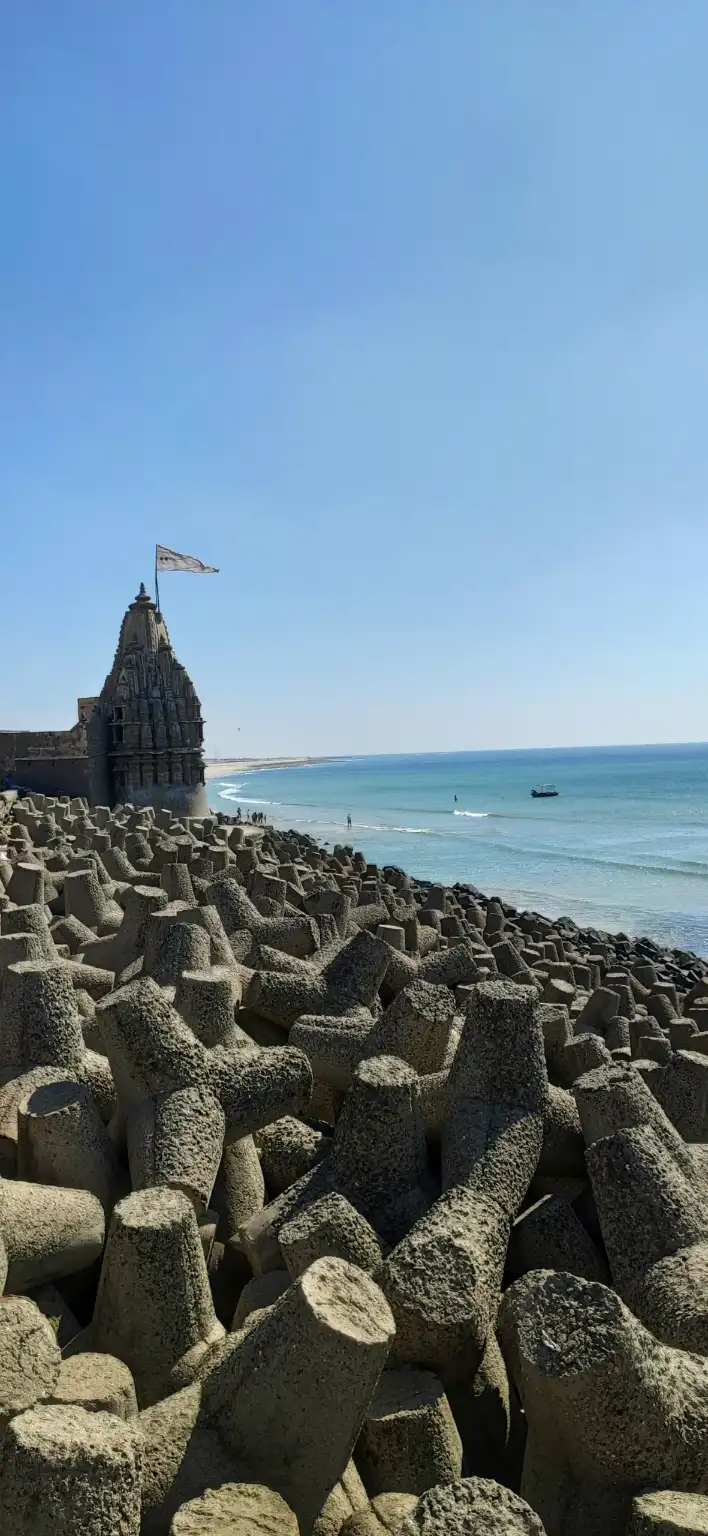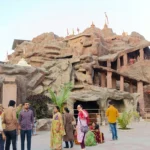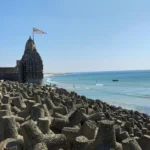Dwarka Somnath Temple: A Divine Journey to Gujarat’s Sacred Shrines
Gujarat, the land of rich culture, heritage, and spirituality, is home to two of India’s most revered pilgrimage sites—Dwarka and Somnath Temple. Both temples hold immense religious significance, attracting millions of devotees and tourists every year. This guide provides an in-depth look at the historical, cultural, and spiritual essence of these temples, along with travel tips and nearby attractions, making it the ultimate resource for those planning a pilgrimage or cultural tour in Gujarat.
Introduction to Dwarka and Somnath Temple
Dwarka, often called the “City of Lord Krishna,” is one of the four sacred Char Dham pilgrimage sites in Hinduism. It is believed to be the ancient kingdom of Lord Krishna and holds the Dwarkadhish Temple, dedicated to him. The city lies on the western coast of Gujarat, overlooking the Arabian Sea.
On the other hand, Somnath Temple is renowned as one of the twelve Jyotirlinga shrines dedicated to Lord Shiva. It stands on the shores of the Arabian Sea in Prabhas Patan near Veraval, Gujarat. This temple is famous for its majestic architecture and its historical significance as a symbol of resilience, having been destroyed and rebuilt multiple times over centuries.
Historical and Religious Significance
Dwarkadhish Temple in Dwarka is believed to be over 2,500 years old, though the current structure dates back to the 15th-16th centuries. According to Hindu mythology, Lord Krishna established Dwarka as his kingdom after leaving Mathura. The temple’s architecture, spiritual ambiance, and mythological stories make it a must-visit destination for devotees and history enthusiasts.
Somnath Temple, dedicated to Lord Shiva, has a fascinating history. It is one of the twelve Jyotirlingas, considered to be the most sacred abodes of Shiva. The temple is known as “Somanath,” meaning “Lord of the Moon.” It has been destroyed and rebuilt several times, notably by Mahmud of Ghazni in the 11th century and later by various rulers. The present structure was reconstructed in the Chalukya style of temple architecture in 1951, symbolizing India’s rich cultural heritage and indomitable spirit.
Architecture and Highlights
Dwarkadhish Temple Architecture:
The temple features five stories supported by 72 intricately carved pillars.
The main shrine houses the idol of Lord Krishna as Dwarkadhish, the King of Dwarka.
The temple’s spire is 78 meters high, adorned with a flag that is changed several times a day.
The temple complex includes many smaller shrines dedicated to other deities.
Its intricate carvings depict various episodes from Krishna’s life.
Somnath Temple Architecture:
The temple follows the Chalukya style of architecture with beautifully sculpted pillars and domes.
The main sanctum houses the Jyotirlinga, believed to be self-manifested (Swayambhu).
The temple complex includes a museum that showcases its history and artifacts.
The temple faces the Arabian Sea, offering breathtaking views and spiritual serenity.
The temple’s prasad (holy offering) and daily aarti attract thousands of devotees.
How to Reach Dwarka and Somnath Temple
Dwarka:
By Air: The nearest airport is Jamnagar Airport, about 130 km from Dwarka.
By Train: Dwarka has its own railway station well connected to major cities.
By Road: Well connected by state and national highways, buses and taxis are available.
Somnath:
By Air: The nearest airport is Diu Airport, approximately 88 km away. Rajkot Airport (around 150 km) is another option.
By Train: Somnath Railway Station connects it to major cities like Ahmedabad, Mumbai, and Rajkot.
By Road: Regular buses and taxis ply from nearby cities and towns.
Best Time to Visit
The best time to visit Dwarka and Somnath is from October to March, when the weather is pleasant and ideal for sightseeing and pilgrimage. Summers can be hot and humid, while monsoon season may cause travel disruptions due to heavy rains.
Festivals and Events
Janmashtami in Dwarka: Celebrates Lord Krishna’s birth with grand festivities, including devotional singing, dances, and rituals attracting pilgrims from all over the country.
Mahashivratri in Somnath: A major event celebrated with night-long prayers, cultural programs, and fairs.
Somnath Fair: Held annually, this fair includes various cultural and religious events around the temple.
Nearby Attractions
Near Dwarka:
Rukmini Devi Temple: Dedicated to Lord Krishna’s wife, located just a few kilometers from Dwarka.
Bet Dwarka: An island believed to be Krishna’s original kingdom with ancient temples and serene beaches.
Nageshwar Jyotirlinga Temple: One of the twelve Jyotirlingas, located near Dwarka.
Near Somnath:
Bhalka Tirth: The place where Lord Krishna is believed to have left his mortal body.
Gir National Park: The last refuge of Asiatic lions, located around 65 km from Somnath.
Veraval Beach: A scenic spot to relax and enjoy the Arabian Sea views.
Accommodation and Food
Both Dwarka and Somnath offer a variety of accommodations ranging from budget hotels to luxury resorts. Many temples also provide dharamshalas (pilgrim lodging) for devotees. The local cuisine includes delicious Gujarati and Kathiawadi dishes, with plenty of vegetarian options. Street food like fafda, dhokla, and sweets are popular among visitors.
Travel Tips for Dwarka Somnath Temple Tour
Plan your trip during the cooler months to avoid extreme heat.
Book accommodations in advance, especially during festival seasons.
Dress modestly as both are religious sites.
Respect local customs and temple rules.
Use local transport options for a more authentic experience.
Carry water and light snacks during temple visits.
Conclusion
A tour covering Dwarka and Somnath Temple is not just a spiritual journey but also a cultural and historical exploration of Gujarat’s rich heritage. From the divine aura of Lord Krishna’s kingdom to the powerful presence of Lord Shiva’s Jyotirlinga, these temples offer an unforgettable experience for pilgrims and travelers alike. Whether you seek peace, spirituality, or adventure, the Dwarka Somnath Temple tour package is a perfect way to explore the sacred soul of Gujarat.




